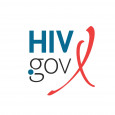HIV.gov recognizes National Native HIV/AIDS Awareness Day (NNHAAD) and joins with the American Indian, Alaska Native, and Native Hawaiian communities (hereinafter referenced interchangeably as Tribal and Indigenous) to promote HIV testing, prevention, and treatment. NNHAAD is intentionally observed in March—the beginning of spring—because of the significance of this in Tribal communities as a time of renewal to the cycle of life. The observation, which is recognized on March 20, promotes raising awareness about the impact of HIV in Tribal communities where, per CDC data from 2018, “the rate (per 100,000 population) of HIV diagnoses in the United States among adult and adolescent American Indian/Alaska Native males was greater (16.2) than the rate for White males (9.6) [and] the rate […] among American Indian/Alaska Native females was greater (3.0) than for White females (1.7).” To highlight the importance of NNHAAD, we spoke with a member of the Navajo Nation who works as an HIV program coordinator to discuss this year’s theme, the inclusion of Native voices in the HIV movement, and the importance of culturally relevant messaging in reaching Indigenous communities.
This Year’s Theme
NNHAAD was initiated to raise the Native voice in the whole HIV movement. “There was an initial exclusion of our voices in the mid-2000s when local community members noticed a gap in HIV services for the American Indian/Alaska Native communities. From this, the initial HIV community outreach work started with a grassroots call to action that began seeking donations from local agencies and community stakeholders to raise HIV prevention education and awareness,” shared Donald Chee, who works at the National Native HIV Network (Native Network), which falls under the Community Health Education & Resiliency Program of the Albuquerque Area Indian Health Board.
As he reflected on the importance of NNHAAD, Donald shared that this year’s theme, “It’s All Relative, Our Experience Makes a Difference,” reflects a fundamental principle in Navajo culture—K’e, which means kinship and describes people’s relationships with their community and its members. He shared, “K’e guides us in everything that we do. The theme represents bringing our Native voice to the table to ensure inclusion in all spaces at local, regional, and federal levels. It goes back to kinship and embodies that the work that we’re doing in the HIV movement is all related and we should honor that.” In addition to the inclusion of Native voices in the HIV movement, we also discussed the importance of culturally relevant efforts in reaching Indigenous communities.
Essential Collaboration
The Native Network collaborates with representatives from the 12 Indian Health Service regions to strategize on creating HIV messaging for Tribal communities and provide resources to the Network on the communities’ needs. This collaboration is essential as the regional representatives are all Native professionals who possess relevant knowledge and skills to provide culturally sensitive educational awareness to Indigenous communities on a range of topics. The Native Network hosts webinars at the recommendation of the regional representatives and recently presented on congenital syphilis, “which is affecting Native communities at alarming rates,” noted Donald. The next webinar will focus on HIV and aging, and other events that are HIV-specific and account for the cultural and geographical nuances in Tribal communities are also forthcoming. “Today, the HIV movement continues to vary greatly between mainstream society and rural Tribal communities. Stigma, unmet needs regarding access to health care, funding, and discrimination are still significant issues impacting us. We’re working hard to sustain efforts, and I feel honored to continue to do this work and to make a change in Tribal communities!”
Learn More
This blog post was published March 19, 2024, on HIV.gov.








Comments
Comments